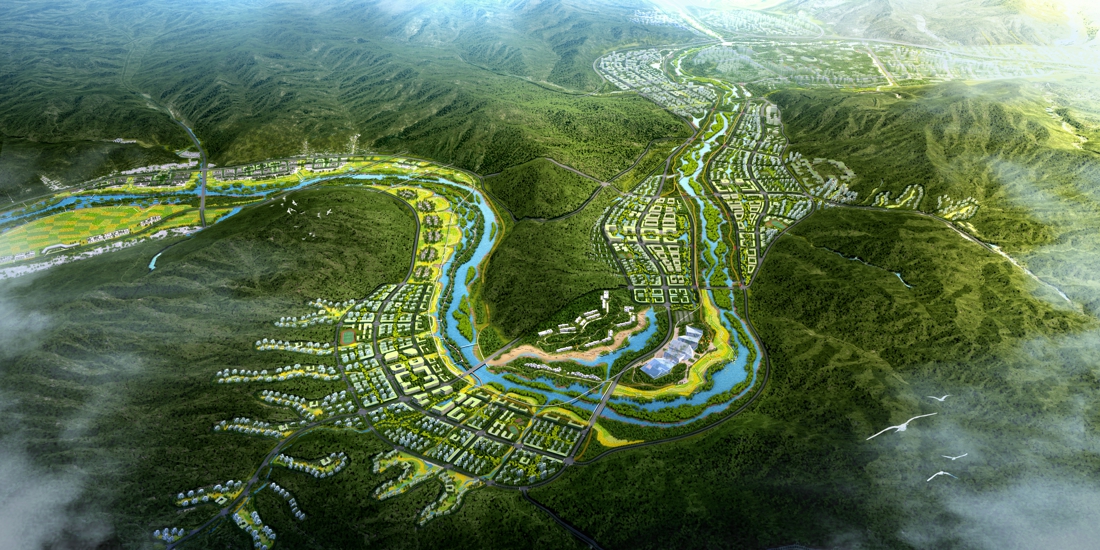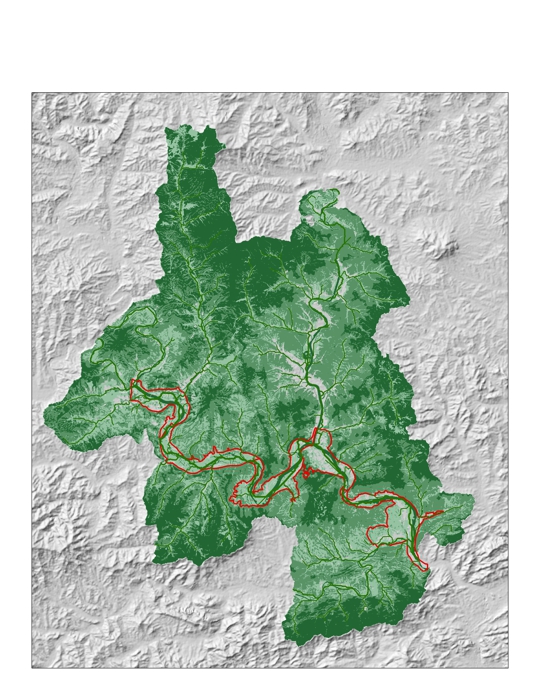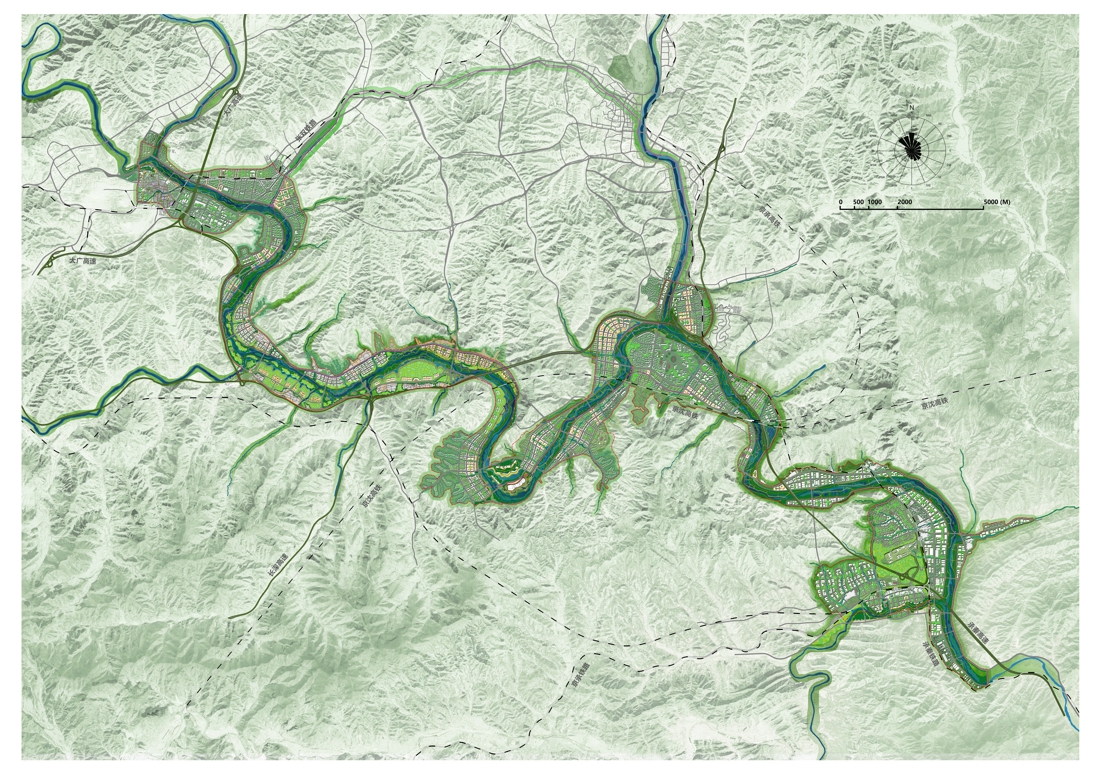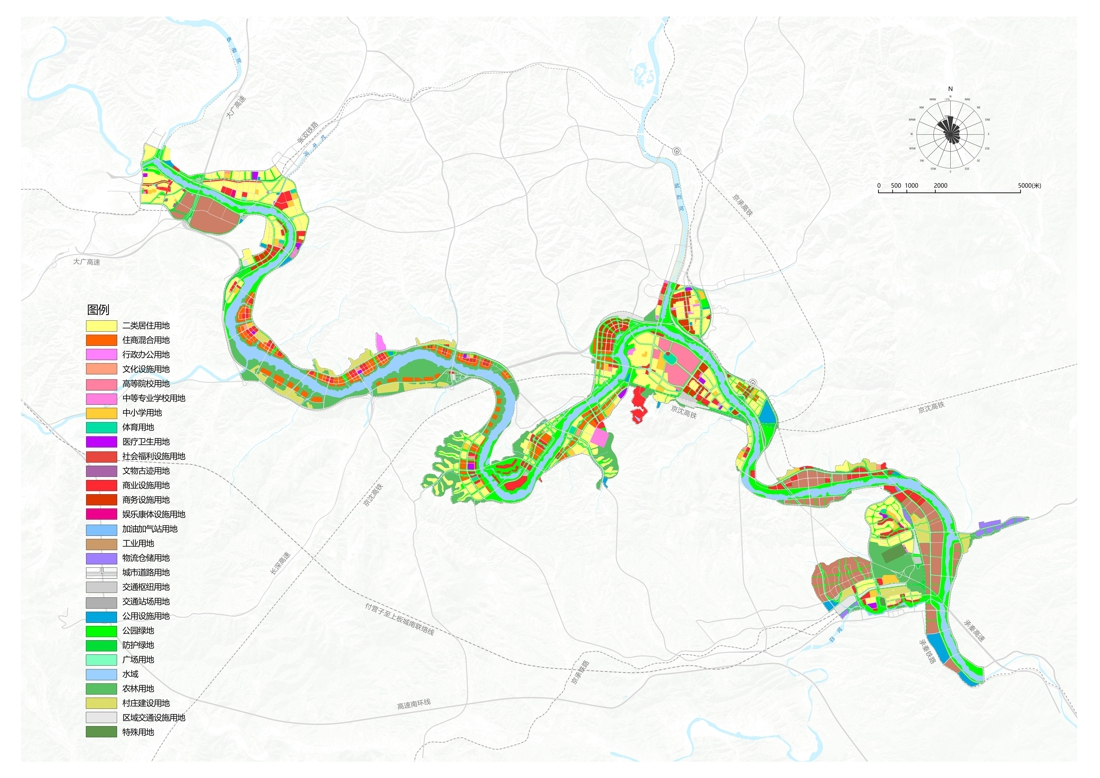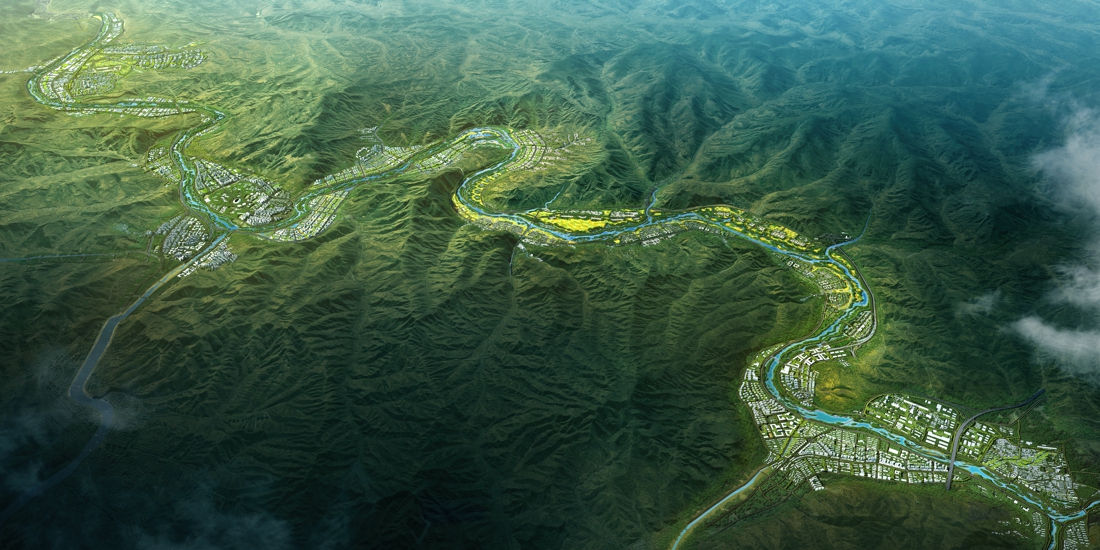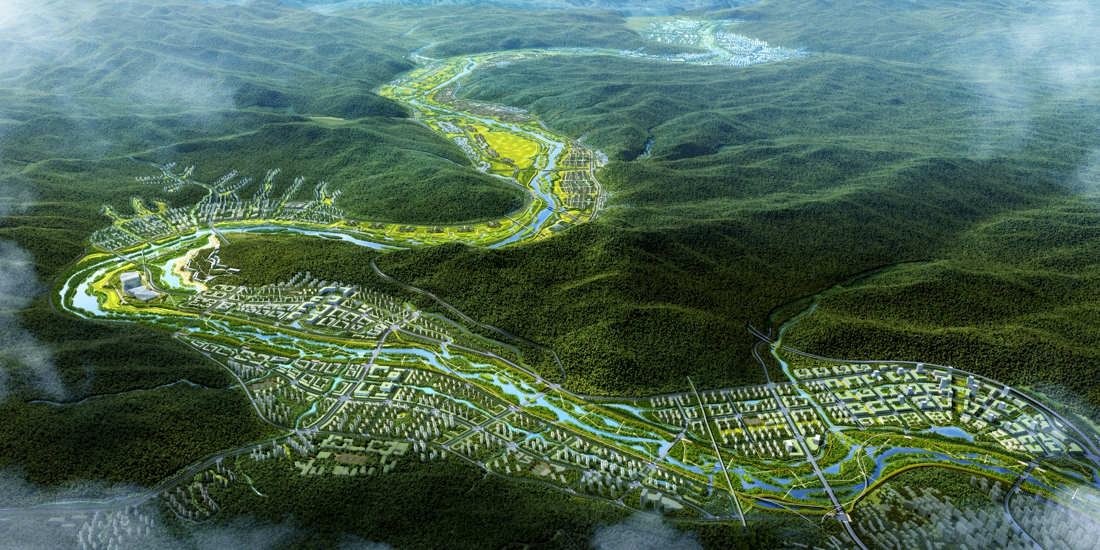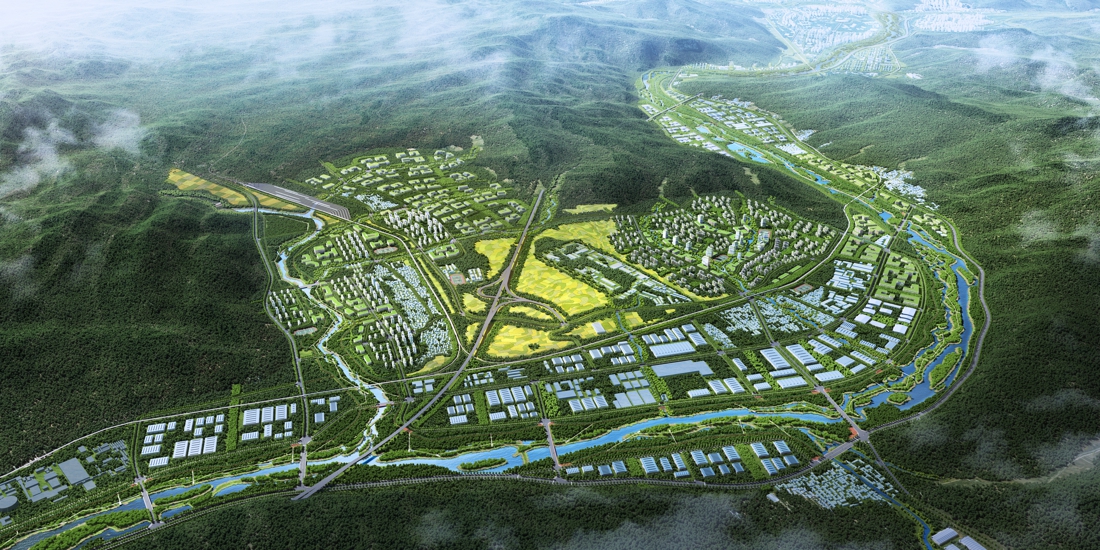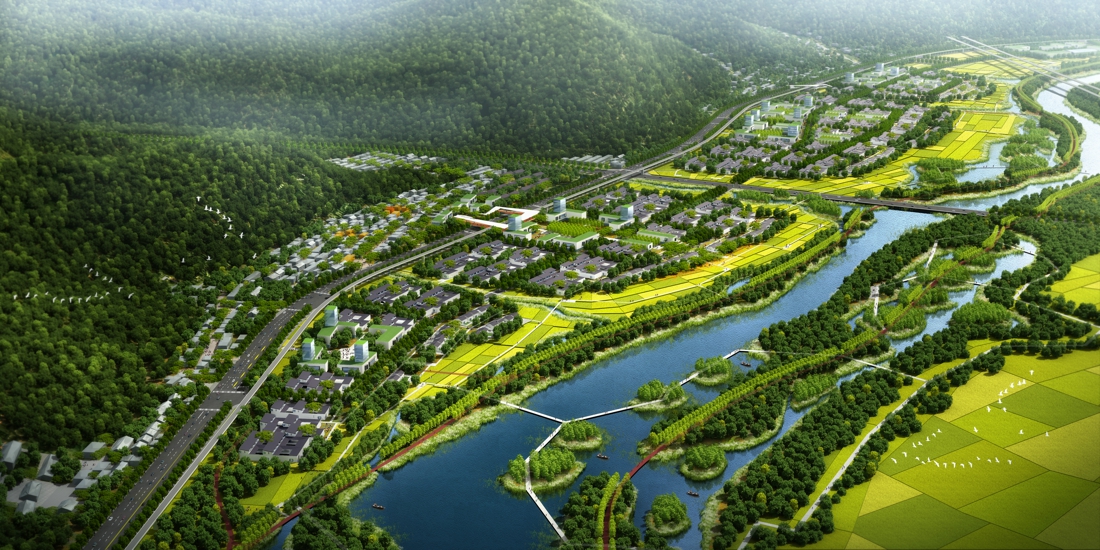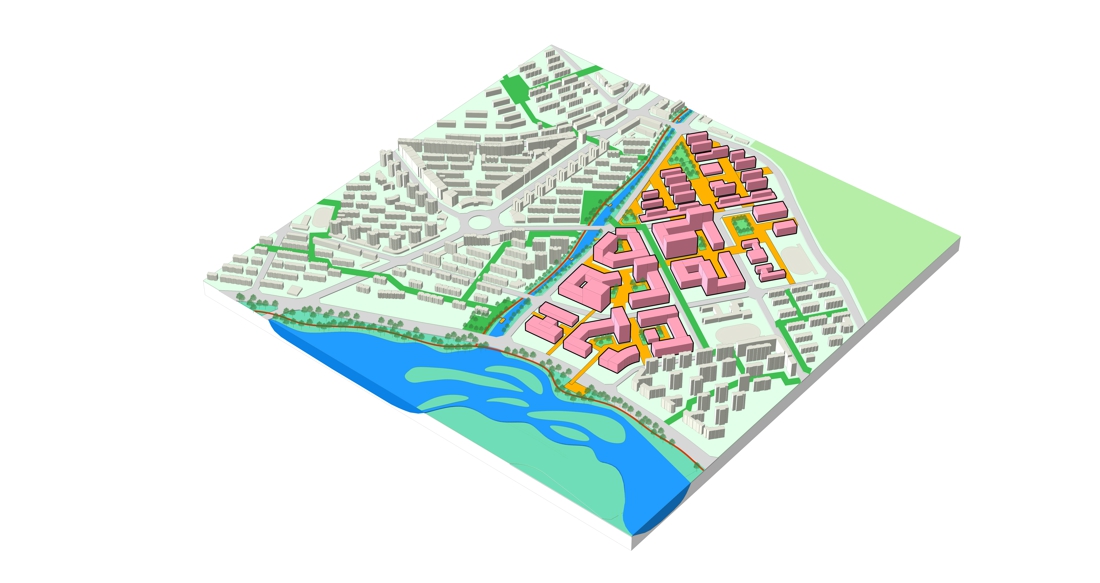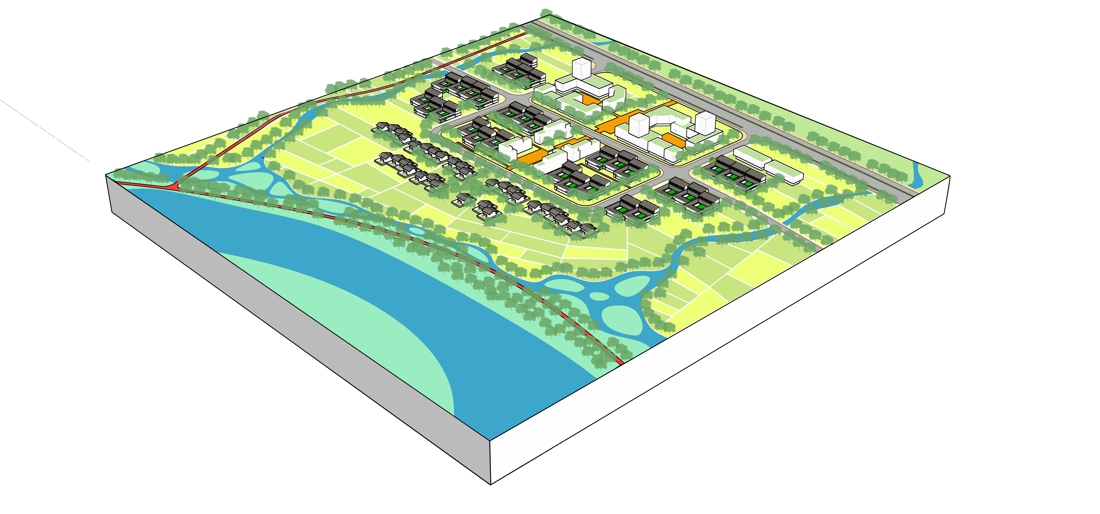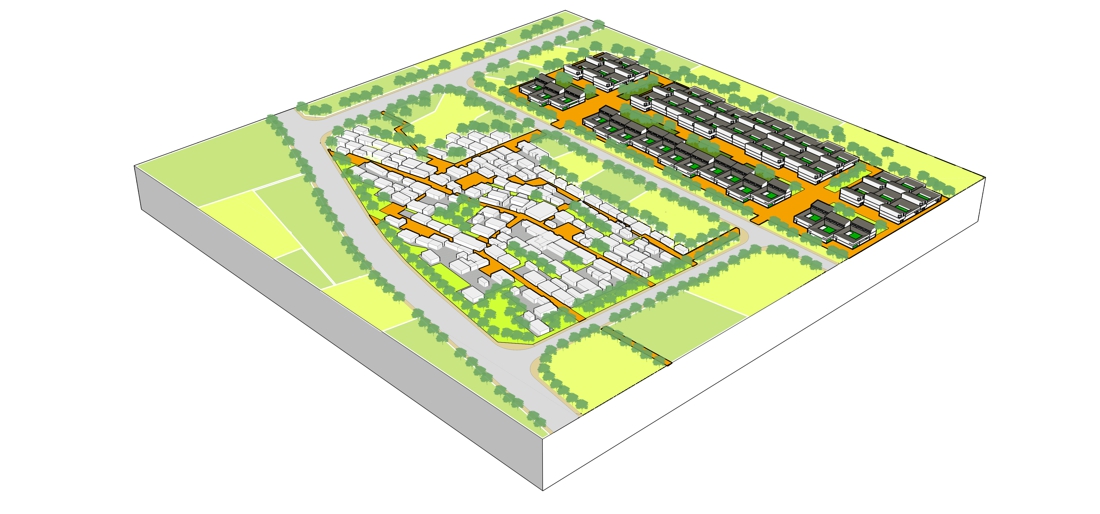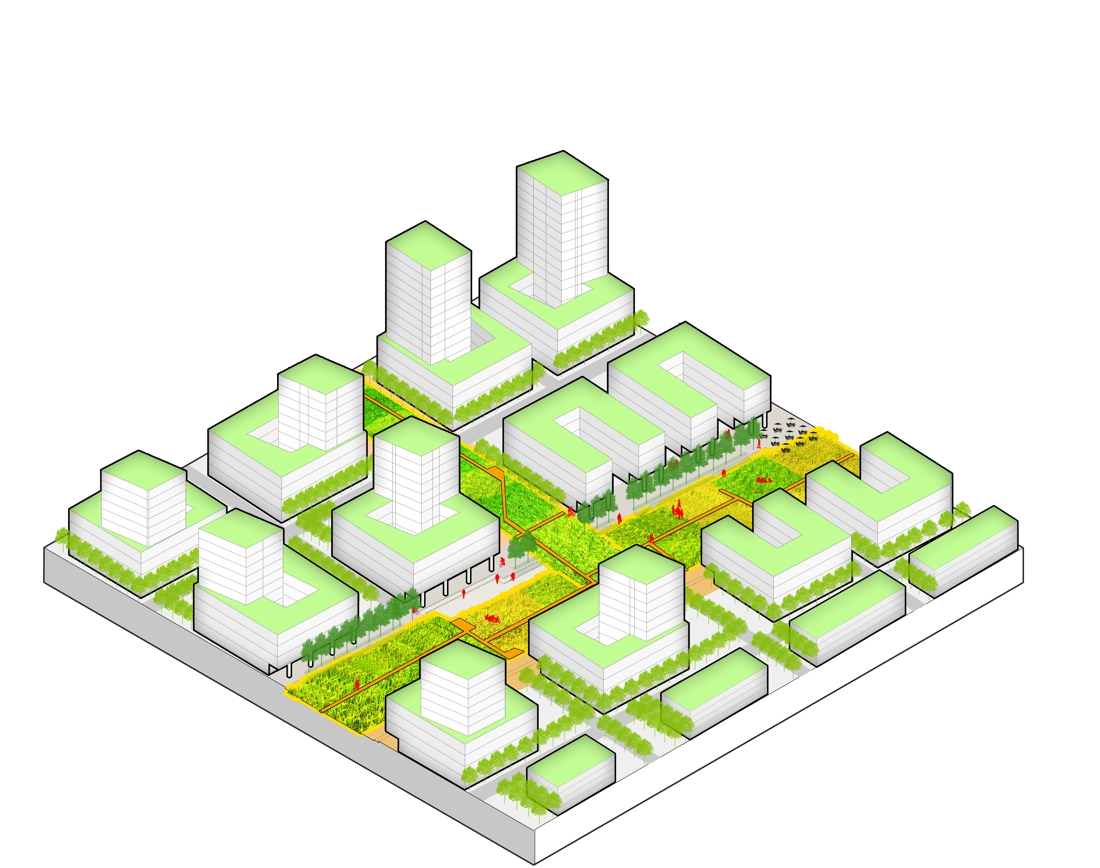Chengde Luanhe City Design
Project Information
- Project Location:
- China Chengde, Hebei
- Project Scale:
- 86 Square Kilometers
- Design Time:
- Decemner 2021
- Client:
- Chengde Development and Reform Commission, Chengde Natural Resources and Planning Bureau
Project Profile
1. Project Statement
The total area of Luanhe New City is about 86.32 square kilometers. It is located in the narrow and long valley in the upper reaches of the Luanhe River. The core area is designed to be about 2.12 square kilometers. With Daguikou Village as the core, it is a pilot area for the integration of urban and rural areas of Luanhe New City. From agricultural civilization, industrial civilization, to the era of ecological civilization, the desire for a better life has always been the eternal pursuit of human beings, which is essentially the desire for high-quality ecosystem services. As the back garden and ecosystem service provider of Beijing-Tianjin-Hebei Region, climate and location are the essential advantages of Chengde. Luanhe New City, as a space relief, cultural continuation and industrial supplement of Chengde Old City, must establish a development orientation based on ecological civilization, that is, the "New Villa" beautiful life practice area.
2. Objective and Challenge
The urban development of Chengde has been in contradiction for a long time: it has long relied on heavy industry with high pollution and high energy consumption, but its output value still ranks at the end of Hebei Province; it has a world-famous summer resort, but the tourism industry still relies on the ticket economy and lacks high-quality service facilities, which is not attractive in the cold and long winter; the big data and intelligent manufacturing industries that have been promoted in recent years are also facing the threat of homogeneous competition from many surrounding cities due to factors such as the regional industrial division of labor and Chengde’s own hardware conditions. At the same time, Chengde's narrow spatial layout and monsoon climate also cause heavy rainfall peaks in summer to rise and fall abruptly. River channels with hardened canalization and degraded vegetation have replaced natural river valley wetland forest belts, and wide roads tightly stick to the shoreline, which reduces ecological resilience and isolates the hydrophilic experience.
These problems are actually also attributable to the inertial thinking of industrial civilization. What we need to think about is, in the era of ecological civilization, how to deal with the spatial relationship between the city and nature, so as to realize the view of mountains and rivers? How to ensure ecological security in the construction of water conservancy project infrastructure? How to save resources and improve efficiency in production and lifestyle? How to achieve integration and complementarity in the existing division of primary, secondary and tertiary industries?
3. Design Strategy
The positioning of the "New villa” beautiful life practice area is realized mainly through five core strategies:
(1) Urban spatial pattern based on ecological infrastructure: Build a comprehensive ecological security pattern, clarify the bottom line protection scope for the harmonious coexistence of the city and nature, and form a continuous and complete ecological infrastructure. Construct a sponge valley composed of primary, secondary and tertiary runoff corridors and floodplain wetlands. In view of the current situation, five wetland reconstruction modes are proposed, namely, the forest gap wetland, the island wetland, the tree island wetland, the inland river wetland and the raised field wetland, so as to enhance the capacity of water body regulation, storage and purification, accelerate the natural succession, and restore the habitat diversity. Precise location selection
(2) Green and circular industrial ecology: Starting from urban-rural integration, industrial transformation, and new city services, establish a diversified, integrated and complementary new city industrial system, and establish an industrial structure of “One Belt, One Ring and Four Groups”. Implement the concept of circular economy, utilize the industrial and solid waste resources in the new city and its surrounding areas, promote waste heat power generation for heating, comprehensive utilization of tailings and waste residues, and strengthen the circulation of energy and material flow within the new city.
(3) Fast and slow smart transportation: Establish an urban rapid transportation system with outer and inner connections, and focus on building a smart light rail loop connecting the new and old cities. The urban road adopts the texture of small blocks and dense road network, which eases traffic and facilitates the mixing of functions. At the same time, an all-weather slow-moving system around the water system is established to encourage green travel and enhance the vitality of the city.
(4) Ecological and pleasant urban spatial forms: establish six urban spatial forms, namely, urban renewal, idyllic communities, shared farms, waterfront communities, water introduced into the city, and valley dwellings. At the same time, a landmark large-scale off-season tropical greenhouse - "Northern Sanya" is planned in the center of the new city to inject vitality into winter tourism.
(5) A shared community with urban and rural integration and common prosperity: Propose a "sow economy" model led by state-owned enterprises, provide policy and financial support, enhance villagers' employment, attract small and micro enterprises, freelancers to settle in and high-net-worth consumers in Beijing-Tianjin-Hebei Region, drive the economy through corporate taxation, and ultimately achieve common prosperity. The form of the shared community is reflected in the old and new symbiosis model of "cut in line" and "collage".
Among them, the core area combines the concept of agricultural urbanism to build a new utopia with harmonious coexistence of mountains, water, fields and residences, and a beautiful life demonstration area of urban and rural co-prosperity from five aspects: (1) Practice the social form of "sow economy", drive employment of villagers, deploy small and micro business incubation, attract service industry personnel to settle in and high net worth consumers in Beijing-Tianjin-Hebei Region; (2) Reasonable and diversified functions and product layout that create a five-in-one life form of poetic habitat, research and education enlightenment, art and culture and innovation, eco-friendly agriculture and free travel; (3) Establish a green community with ecological sponge and resource recycling to realize tail water purification and bio-energy recycling; (4) Form a new utopia spatial form of background green hills + smart light rail + pastoral city + riverside greenway + sponge river valley; (5) The construction model combining "cut in line" and "collage", activate industries through the renewal of homesteads, build new residential and public service facilities, integrate villages and communities, and retain homesickness.
4. Conclusion
Hundreds of years ago in the era of agricultural civilization, the rise of the Mountain Resort and Chengde carried the beautiful life of emperors and generals. After experiencing the loss and confusion in the era of industrial civilization, now, the "New Villa" in Luanhe New City will stand at the outlet of ecological civilization, return to the origin of harmony between human and nature, rediscover the value of Chengde, and finally realize the people's desire for a better life.
